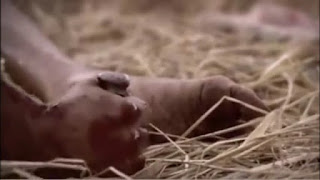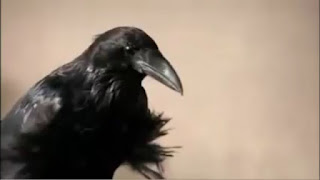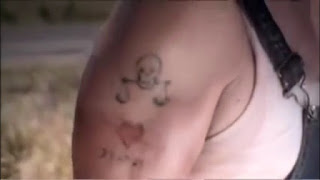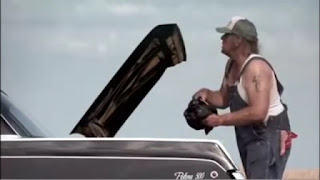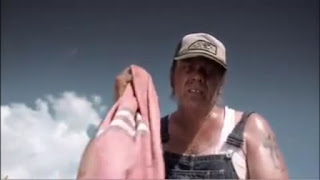Rick Altman's Genre Theory
Applying Rick Altman to the Horror Genre
Semantic: Abandoned house, intense music, blood, dirty area, demons, ghosts, fear, insane asylums, graveyard, dark, shaking camera, low key lighting, scary masks, props such as chainsaws and axes.
Syntactic: Main protagonist (victim/hero), the villain (monster, mutated freak etc.), stupid immoral teenagers getting killed, creepy children etc, religion as a story, Todorov's Narrative Theory, main setting presented as the first thing in the film.
Todorov's Narrative Theory
1) Equilibrium: The state of normality in the story.
2) Disequilibrium: The event that disrupts the state of normality such as a possession in the house in a horror film.
3) Realisation: Characters realisation that something has disrupted the equilibrium such as the realisation of possession of the child.
4) Repair: Characters attempting to fix the situation such as bringing in a exorcist to get rid of the possession.
5) New Equilibrium: The new state of normality.
Horror
The very first horror film was created in 1896, by a french film maker known as Georges Melies, the film was titled 'Le Manoir Du Diable' this translated to the 'The Devil's Castle/The Haunted Castle'. The film was only a two minutes long but contain various elements that would later become connections of horror films, the use of bats, castle, cauldron and devil like figure all contributed to the eerie atmosphere.
The horror genre aims to create a sense of fear, panic, alarm and dread for the audience, doing this by scaring the audience with the portrayal of their worst fears and even nightmares. Horror films usual focus on an evil presence, looking to ancient mythologies as the primary source of influence for their plot, looking at evil figure such as the devil, ghosts and demons, Horror films traditionally used a large amount of violence and gore to drive it's plot, however in recent years this has changed and developed as the ability to scare someone hugely relies on being unexpected and surprise, during the early days of film, blood and gore was never heard of on the big screen, however these days it's become a cliche and fails to entertain the modern audience in the same way.
Due to this the horror genre has to continuously change and evolve to stay fresh, creating new ways to mess with audience. This created sub genres within the horror genre, these include:
- Comedy Horror
- Teen Horror
- Monster Horror
- Slasher
- Supernatural Horror
- Zombie Horror
- Psychological Horror
Comedy
The earliest known publication of a comedy film is 'L'Arroseur arrosé', an 1895 French short black-and-white silent comedy film directed and produced by Louis Lumière. It was first screened on June 10, 1895. The entire film lasts only 45 seconds, but this simple bit of slapstick may be the forerunner of all subsequent film comedy.
Much like the horror genre comedy has also taken a hit with higher expectations, as the audience gets use to the jokes and gags being used in various films, their ability to generate laughter becomes less successful so directors and actors have to envision new ways to make people laugh that is original, for this reason the surplus of comedy films being generated have meant that not many of them become successful.
The Comedy genre, uses humor as it's driving force, it's intended to generate laughter from the audience through the use of it's narrative or characters. Although comedy has taken on serious material as it's source of inspiration, such as movie spoofs. They tend to generally have a happy ending. Comedies are more likely than other films to fall back on the success and popularity of an individual star. Comedy is a incredibly diverse genre forming many other sub genres due to it's ease of being incorporated into other genres, hence Rom-com, being a romantic comedy. The following are sub-genres of comedy:
- Anarchic Comedy
- Action-Comedy
- Black-Comedy
- Horror-Comedy
- Dramedy
- Parody/Spoof
- Romantic-Comedy
- Slapstick
Crime film is a genre that revolves around the action of a criminal mastermind. A Crime film will often revolve around the criminal himself, chronicling his rise and fall. Some Crime films will have a story line that follows the criminal's victim, yet others follow the person in pursuit of the criminal. This genre tends to be fast paced with an air of mystery – this mystery can come from the plot or from the characters themselves.
Crime uses many conventions created by both thriller and horror as it leaves he audience on the edge of the seats trying to pule out what happened alongside the protagonist.
The following are sub-genres of crime:
- Mob/Gangster
- Film-Noir
- Neo-Noir
- Crime-Thriller









